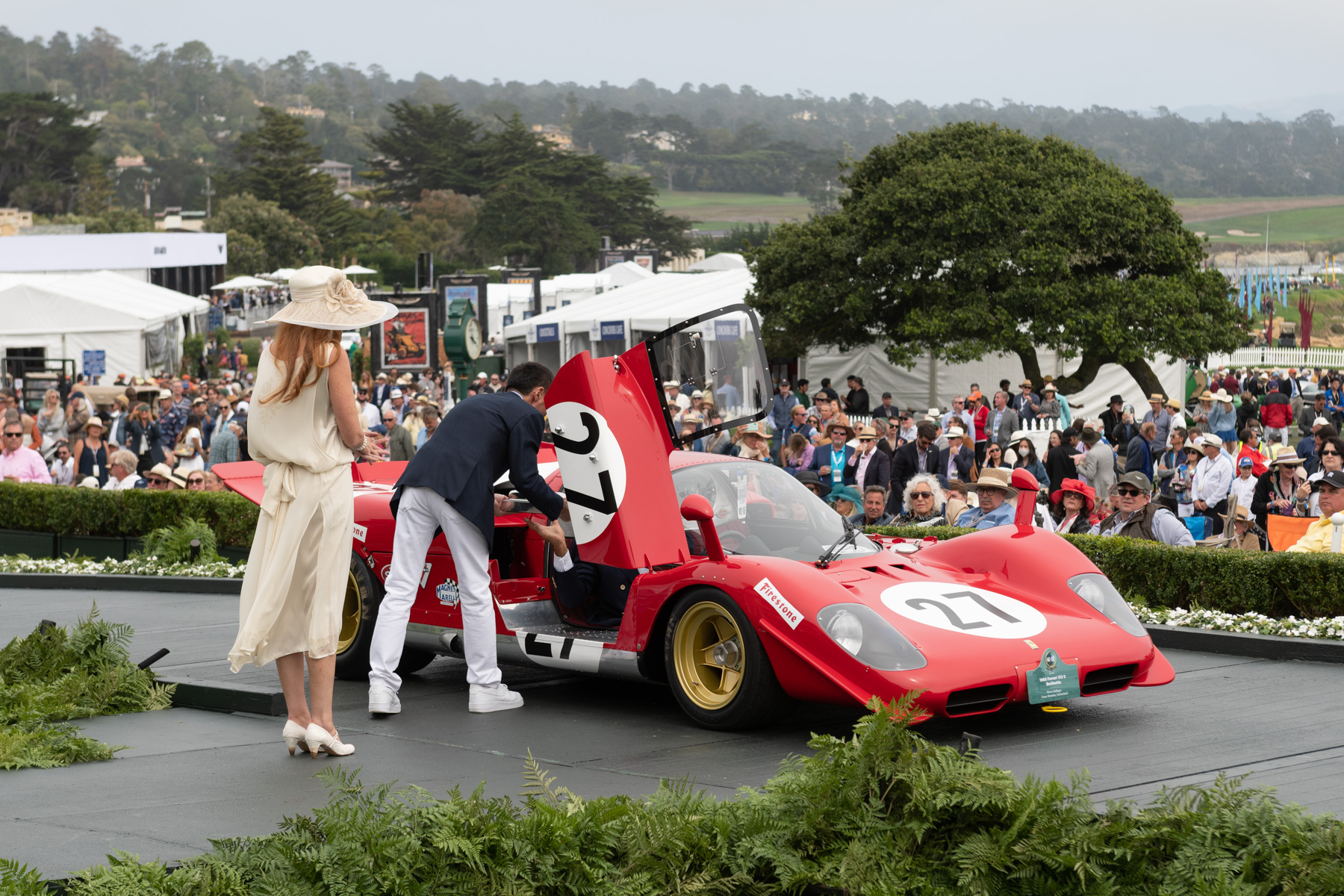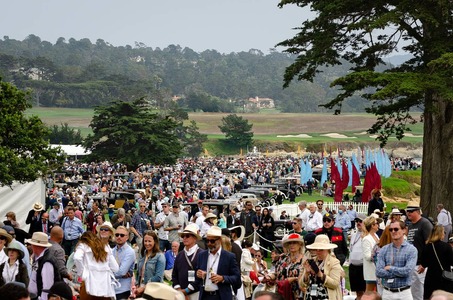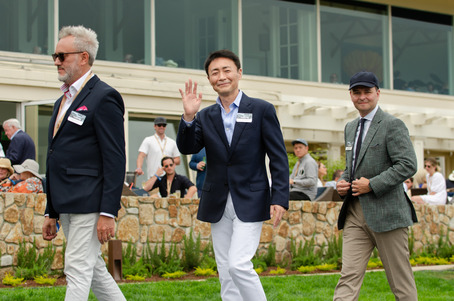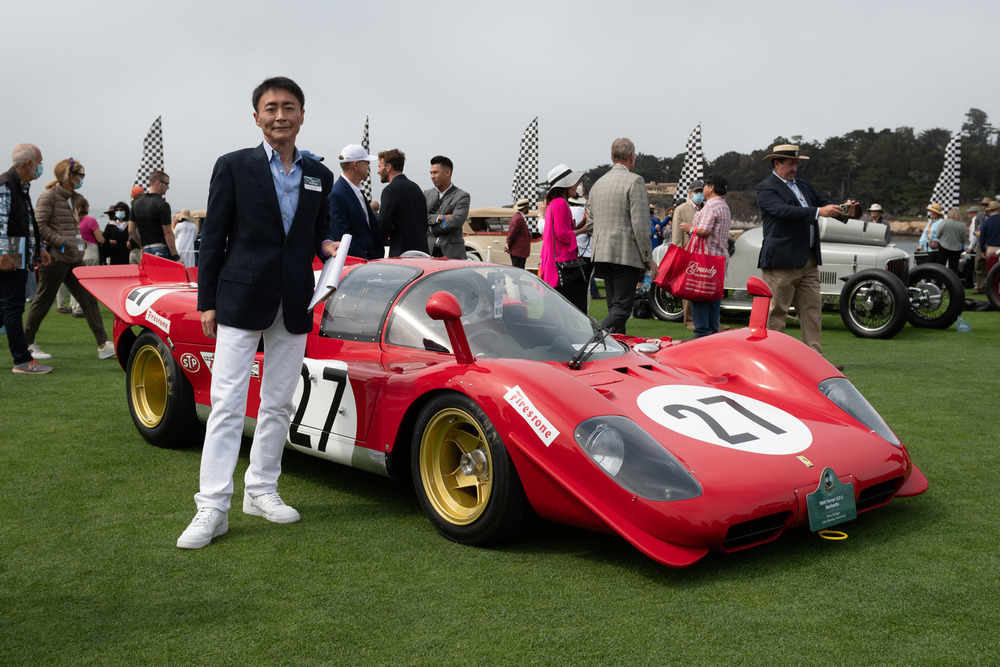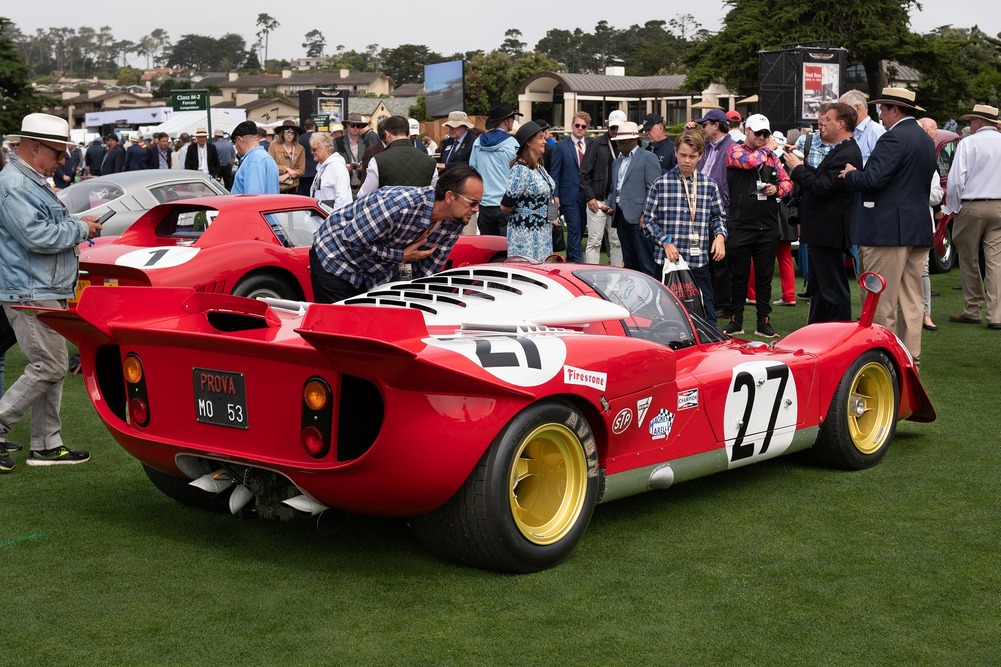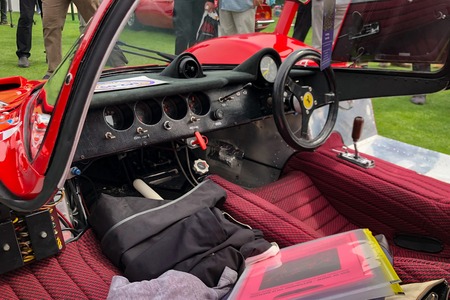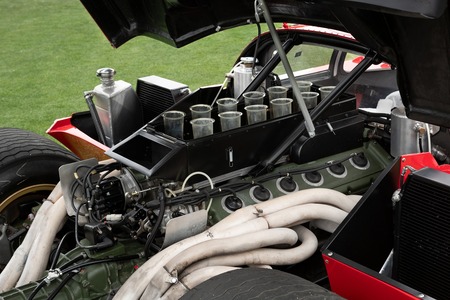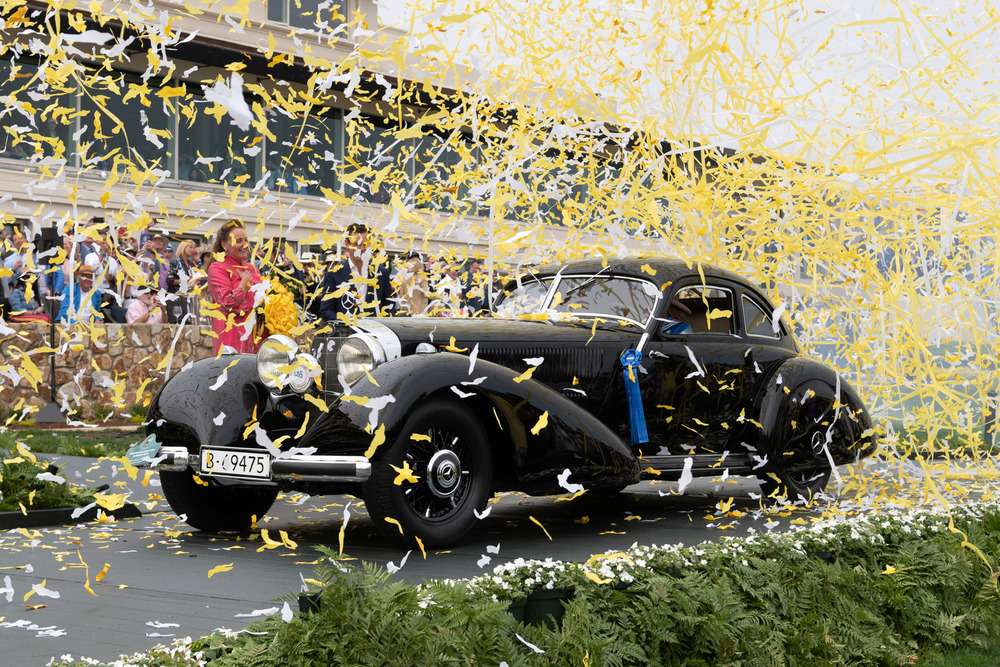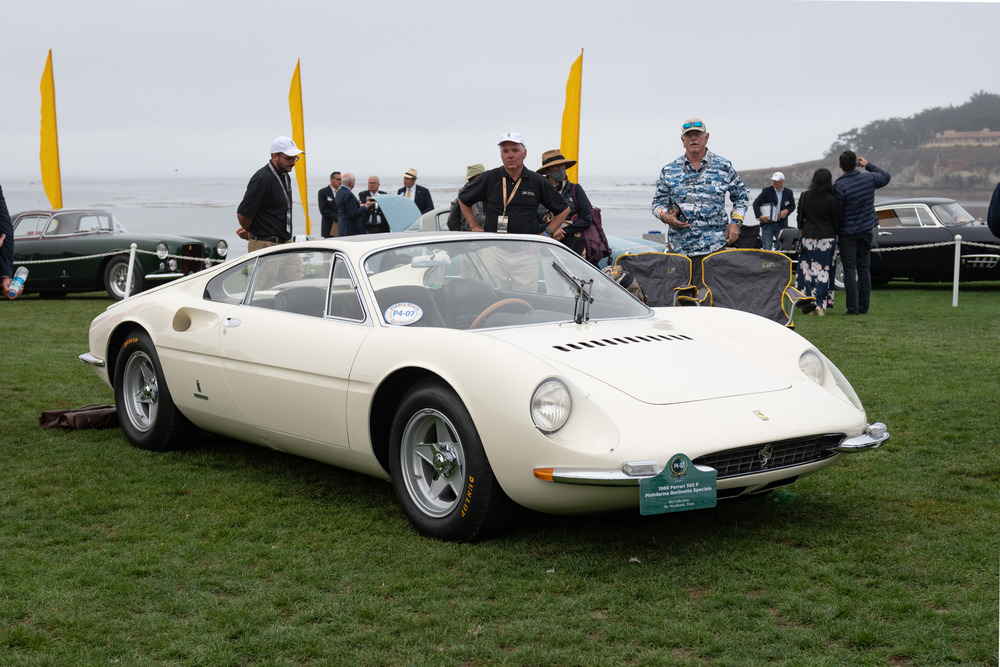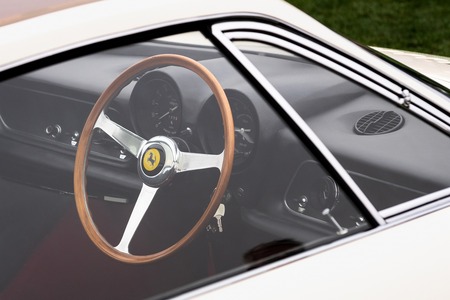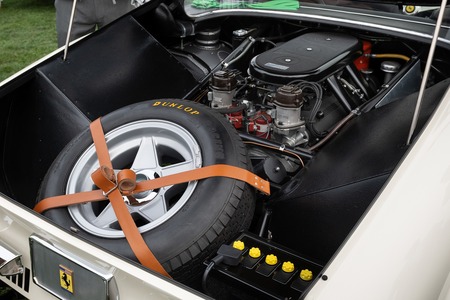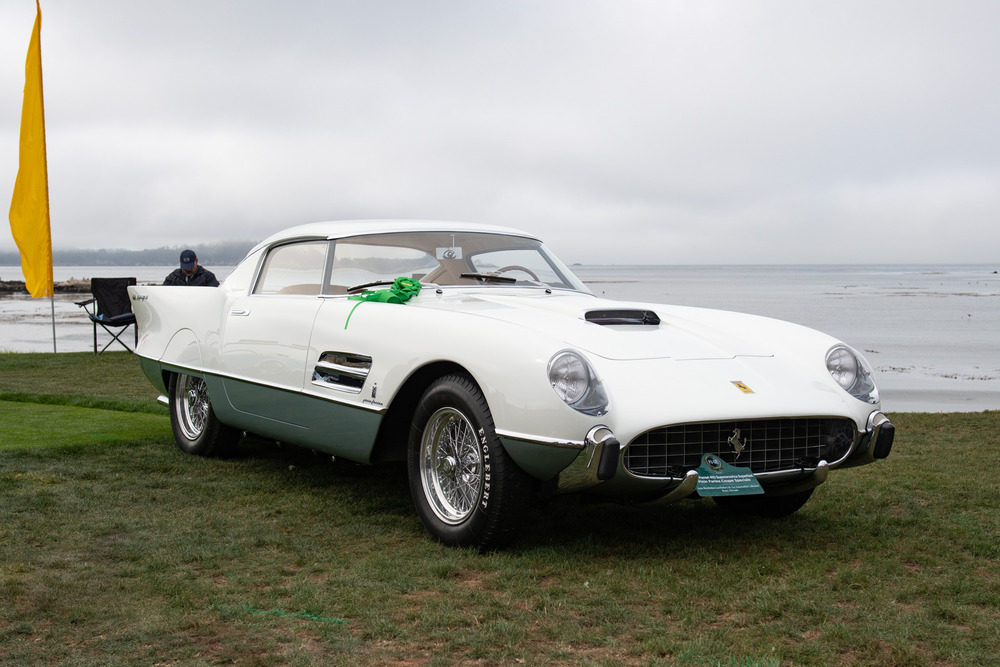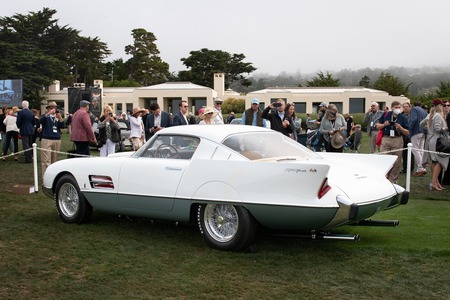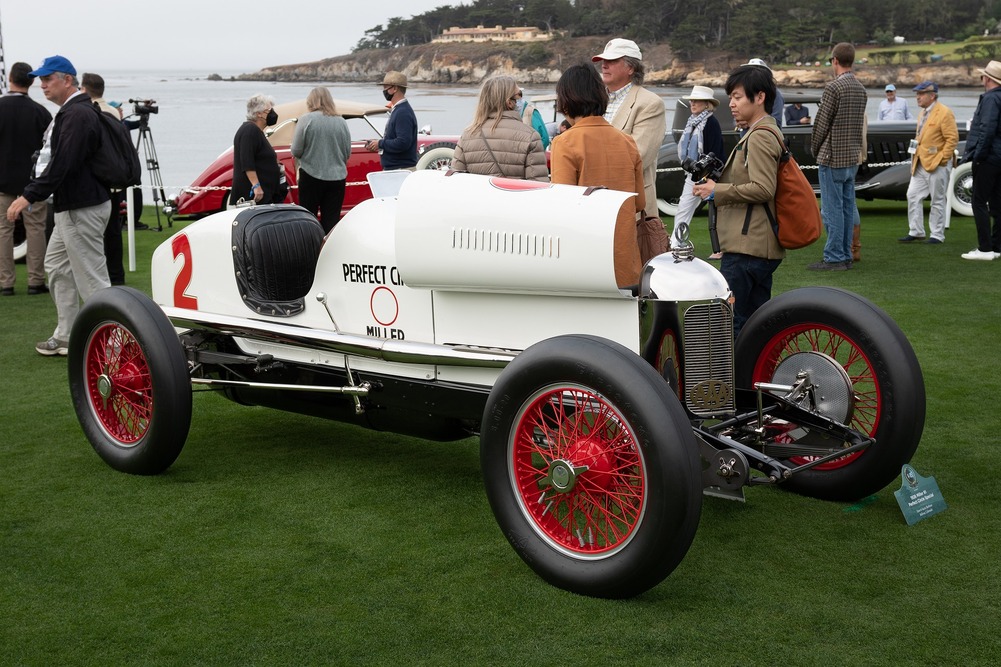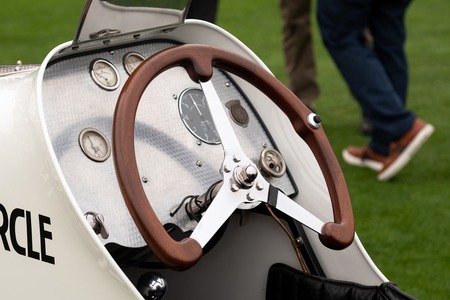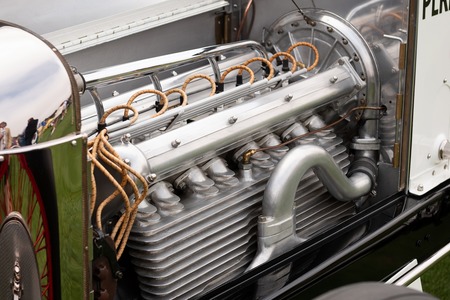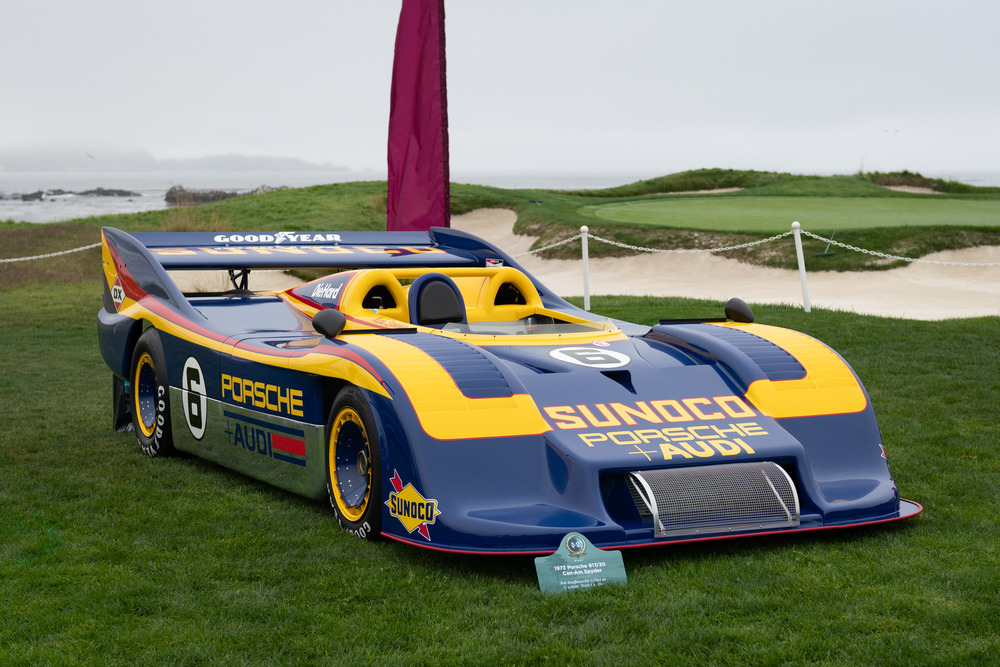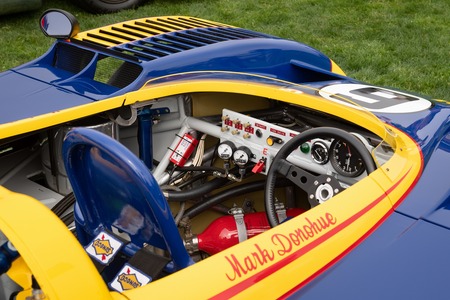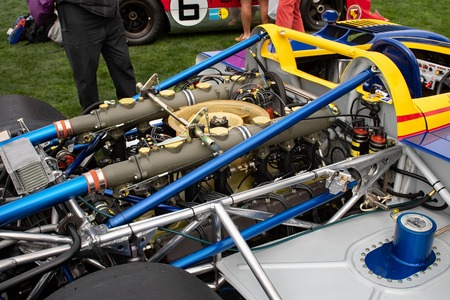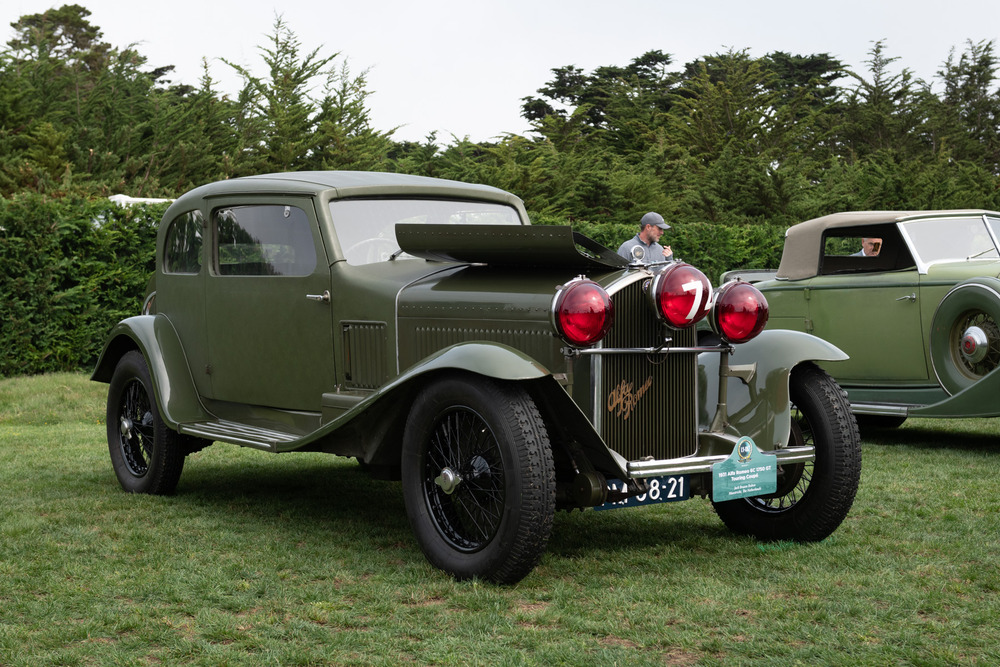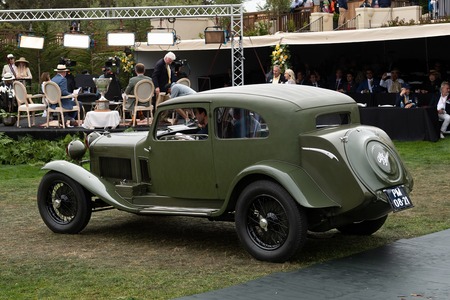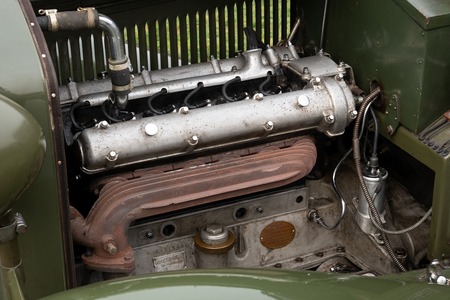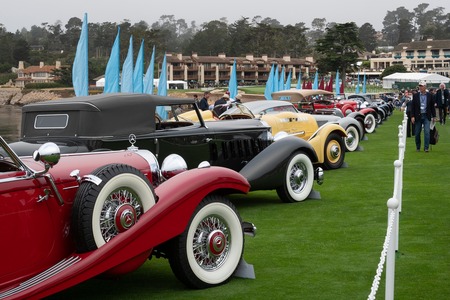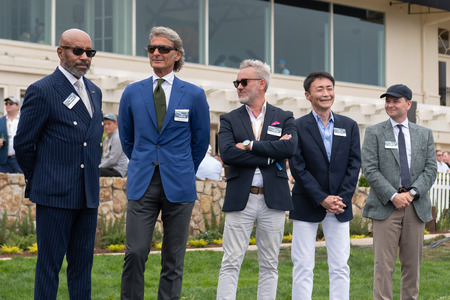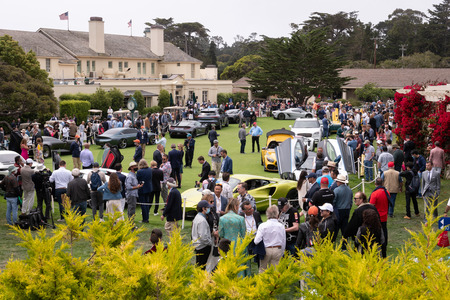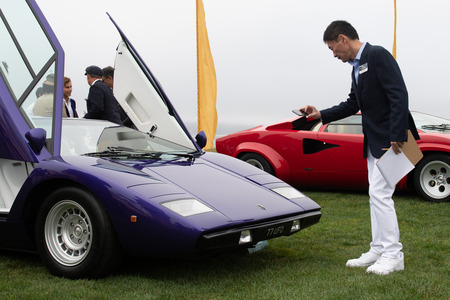The 2021 Pebble Beach Gran Turismo Trophy Goes to the 1969 Ferrari 512S, Also Known From the Movie ‘Le Mans!'
At the 70th Pebble Beach Concours d’Elegance, Gran Turismo series producer Kazunori Yamauchi has selected the 1969 Ferrari 512S as the recipient of the Gran Turismo Trophy.
The Ferrari 512S is a Group 5 category racing car developed by Ferrari to compete in the International Championship for Makes. It is said that its development time was only 3 months, and at the heart of this machine is the 550HP 5 litre V12 designed by Franco Rocci, who took the place of the engineering genius Vittorio Jano.
Ferrari had competed in sports car racing in the late 60s with the famed 330P4, but with changes in engine displacement categories the P4 was no longer competitive, and the 512S was the car they quickly prepared to take its place. The rounded body had a steel pipe spaceframe covered in an aluminum outer skin, and plastic materials were also used for the very first time.
The 512S had many famous battles with the Porsche 917 in sports car races of 1970, and definitely made itself known through its performance, achieving 3rd in the 24 Hours of Daytona and winning the Sebring 12 Hour race. The car that was presented at this year’s Pebble Beach was once owned by the actor Steve McQueen, and the car had an appearance in the movie 'Le Mans' in which McQueen starred in.
This Ferrari 512S is planned for inclusion in a future edition of Gran Turismo. Meanwhile this year’s Best of Show went to the 1938 Mercedes Benz 540K Autobahn Kurier.
Below are the descriptions of the other cars nominated for the Gran Turismo Trophy this year, described in the words of the world renowned car designer Hideo Kodama.
Ferrari 365P (1966)
This is a sensational model that was presented by Pininfarina in the 1966 Paris Salon. The 365P is a Berlinetta with a mid-mounted 4.4L V12 sports racing engine. Perhaps it had a role in convincing Enzo who was fixated on the conventional front engine rear wheel drive layout at the time?
Its most notable point is the three person layout where the driver sits in the centre of the car. It was inspiration for the Matra Simca Bagheera (1974) and the McLaren F1 (1993) in later years. As a side note this layout was already tested in a 1936 Panhard Dynamic Sedan before the 365P.
This particular car was a show stopper in both London and Los Angeles shows, and fell into the hands of an American customer thereafter. It is said that Gianni Agnelli of the Fiat empire also ordered one for himself. I’m sure Agnelli, who was a well known playboy, had beautiful women on both sides as he enjoyed driving this car.
The design theme is also common with the Dino 206 of this era, but its volume and grace is incredible.
Ferrari 410 Super America Superfast (1956)
The 410 Super America was a Pininfarina model which debuted at the Brussels motor show in 1956, transitioning from the 357 to the high performance 410 series. Design wise it is on the same path as the previous model. For example the air intake on the front end was opened more than necessary, and could not really be said to have been designed well.
On the other hand for the Superfast the nose was shaped low, and the intake was integrated very nicely into it. There are also many tests of details that would later be incorporated into later modern designs, such as the colour differentiation between the horizontal line across the centre and the main body, cantilever type structure that removes the A pillar and distributes the stress to the sail panel and so on.
However the then-popular American styling that hints at tail fins might have been a little too much. The later Superfasts that continued after this model maintained some of the motifs while toning it down overall, so the value of innovations in this model can be said to be very high.
Miller 91 (1926)
The first thing that comes to mind when you hear the name Miller is the racing machine that had an elaborate front wheel drive drivetrain, which are rare in America. The hero of the story is Harry Miller, a racing constructor who introduced many free and unrestrained ideas until they partnered with Offenhouser who was another big brand, between 1910 and WWII.
Miller continued to make a variety of creations from FWD, 4WD, Superchargers and independent suspension. There is also a record breaker shaped completely like an egg, based on a 1917 Delage. Even across the Atlantic in Europe, Ettore Bugatti took note of their accomplishments.
This model that was entered is unfortunately not a front wheel drive model, but it is characteristic for its great balance. It was driven by Frank Lockhart in the 1926 Indy 400 Mile race to its victory.
You can really sense the beauty and intelligence of a no-nonsense engineer, that is common across Miller made machines.
Porsche 917/30 (1973)
The Porsche team in Weissach led by F. Piëch completed the more competitive 917 based on the 908, aiming to defeat the Ferrari 512 and Ford GT40 in the 24 hours of Le Mans. While it did not produce satisfactory results in its first race, it won in 1970 and 1971, dominating the top ranks. They wanted to extend its advertising effect to North America as well, and the machine they sent into the CAN-AM series was the 917/10.
This 917/10 was further improved in the 917/30 and given to the Roger Penske team. Penske had newly acquired sponsorship from SUNOCO, and entered two cars in their iconic blue.
While the car basically retains the mechanism of the original 917, it was given a huge rear spoiler and major changes were made to the aerodynamic devices on the front end in order to control the massive power of the twin turbos, and looks completely different on the outside from the original 917.
Alfa Romeo 6C1750 GT (1931)
From the beginning of the 1920’s, Vittorio Jano produced many excellent results in racing with cars like the Alfa Romeo P2. The next compact machine he worked on was the 6C1500 which debuted at the 1925 Milan show.
However this car presented at Pebble Beach is the 1750cc 55HP version which is known for its advancements and evolution. It has the Touring made body made for competing in the Mille Miglia, and is very different in style than the graceful open bodied Flying Star 2 seater that it is related to.
Spec wise, from behind the cowling it is made using the Weymann method of using artificial waterproof fabric for the body. This is also where the Superleggera method that becomes the patent of Touring started.
The radiator stands straight up rather than being reclined, the extra driving lamp, the rear quarter windows are sometimes omitted to lose weight, and it sort of gives off an aura of a serious working car. This car has not been touched in a long time, and is in a good preserved condition.
Car Description Assistance: Hideo Kodama
Photos: John Hietter

